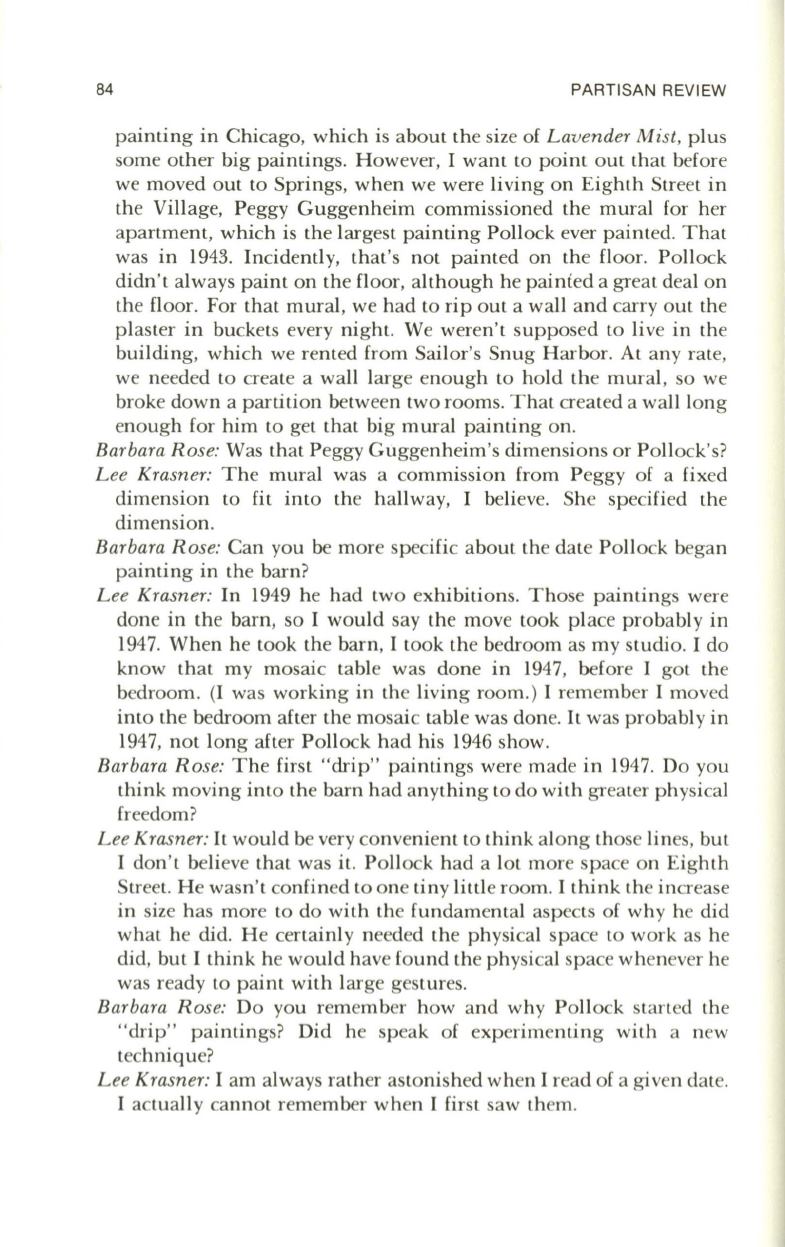
84
PARTISAN REVIEW
painting in Chicago, which is about the size of
Lavender Mist,
plus
some other big paintings. However, I want to point out that before
we moved out to Springs, when we were living on Eighth Street in
the Village, Peggy Guggenheim commissioned the mural for her
apartment, which is the largest painting Pollock ever painted. That
was in 1943. Incidently, that's not painted on the floor. Pollock
didn't always paint on the floor, although he painted a great deal on
the floor. For that mural, we had to rip out a wall and carry out the
plaster in buckets every night. We weren't supposed to live in the
building, which we rented from Sailor's Snug Harbor. At any rate,
we needed to create a wall large enough to hold the mural, so we
broke down a partition between two rooms. That created a wall long
enough for him to get that big mural painting on.
Barbara Rose:
Was that Peggy Guggenheim 's dimensions or Pollock's?
Lee Krasner:
The mural was a commission from Peggy of a fixed
dimension to fit into the hallway, I believe. She specified the
dimension.
Barbara Rose:
Can you be more specific about the date Pollock began
painting in the barn?
Lee Krasner:
In 1949 he had two exhibitions. Those paintings were
done in the barn, so I would say the move took place probably in
1947. When he took the barn, I took the bedroom as my studio. I do
know that my mosaic tabl e was done in 1947, before I got the
bedroom. (I was working in the living room.) I remember I moved
into the bedroom after the mosaic table was done. It was probabl y in
1947, not long after Pollock had his 1946 show.
Barbara Rose:
The first "drip" paintings were made in 1947. Do you
think moving into the barn had anything to do with greater physical
freedom?
Lee Krasner:
It
would be very convenient to think along those lines, but
I don't believe that was it. Pollock had a lot more space on Eighth
Street. He wasn't confined to one tiny little room. I think the increase
in size has more to do with the fundamental aspects of why he did
what he did. H e certainly needed the physical space to work as he
did, but I think he would have found the physical space whenever he
was ready to paint with large gestures.
Barbara Rose:
Do you remember how and why Pollock started the
"drip" paintings? Did he speak of experimenting with a new
technique?
Lee Krasner:
I am always rather astonished when I read of a given date.
I actually cannot remember when I first saw them.


